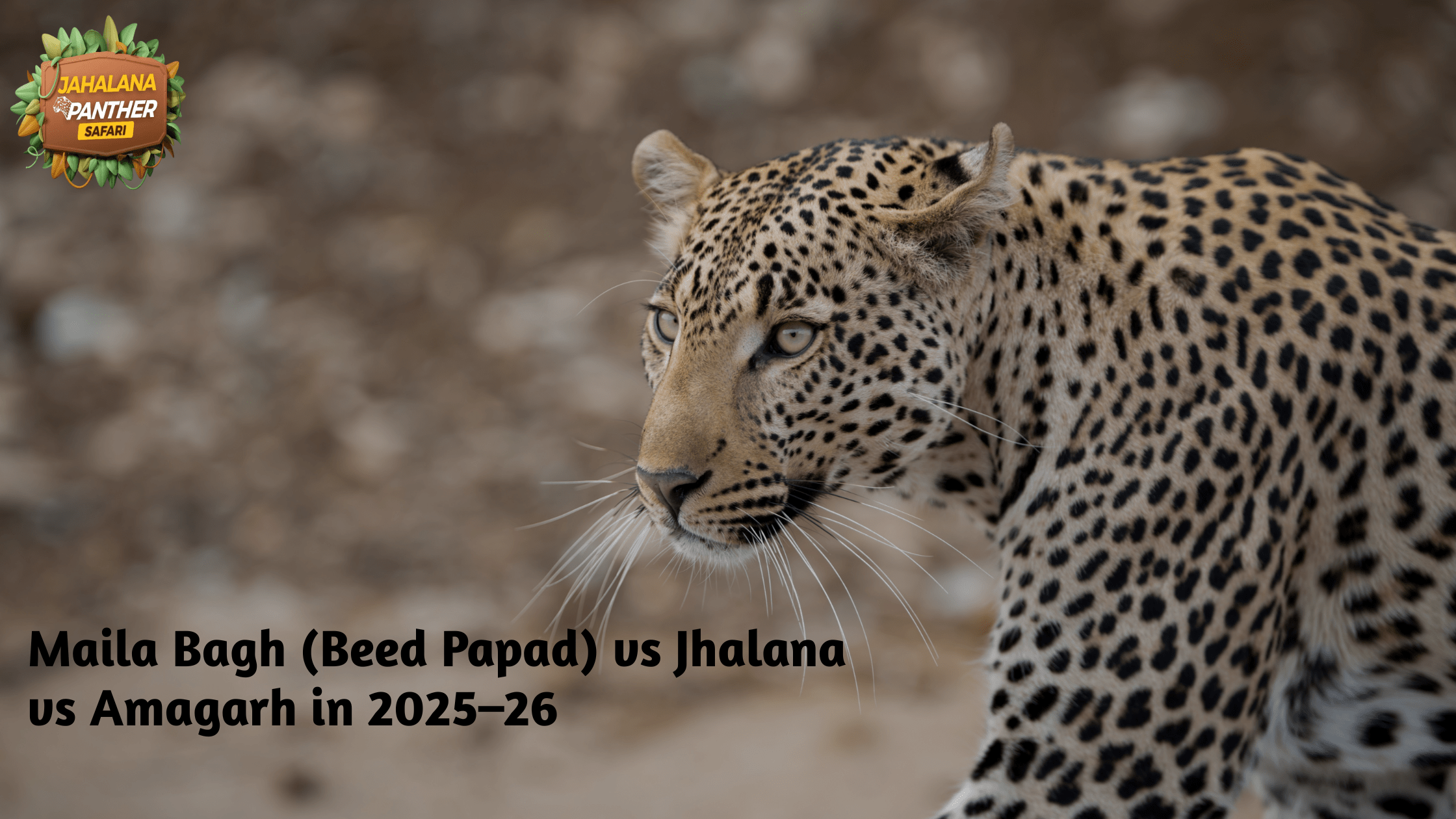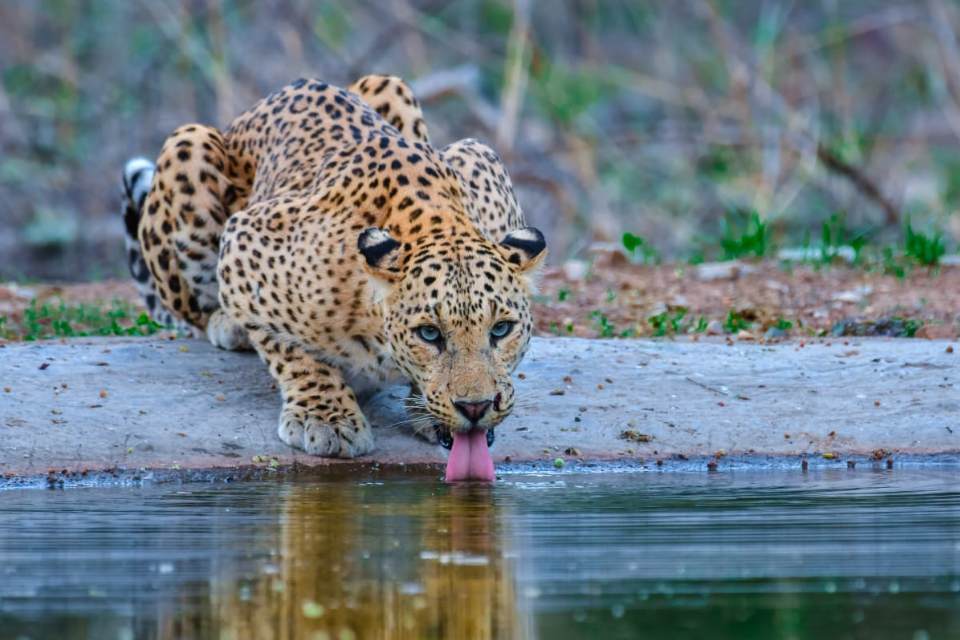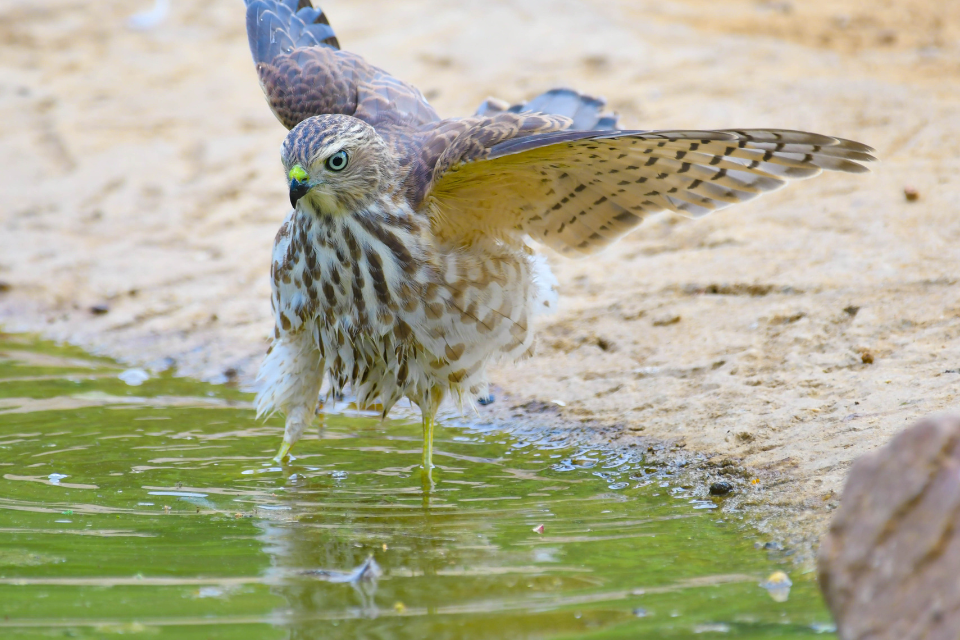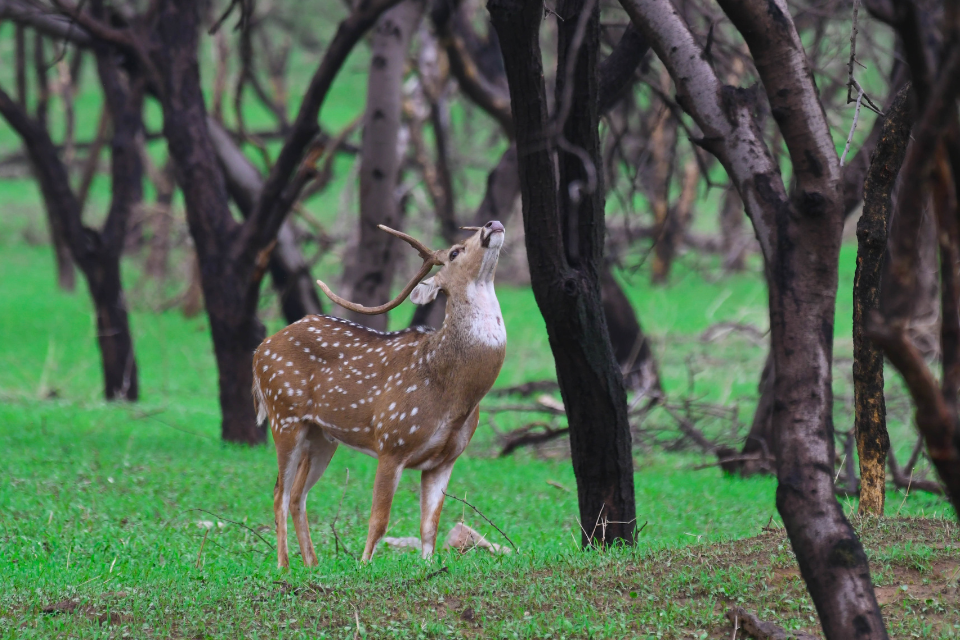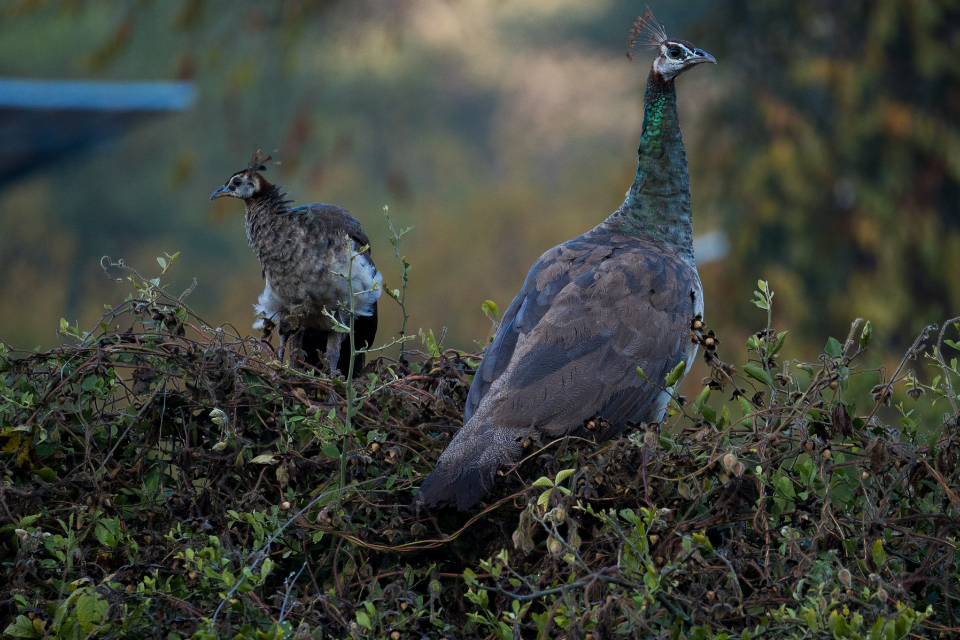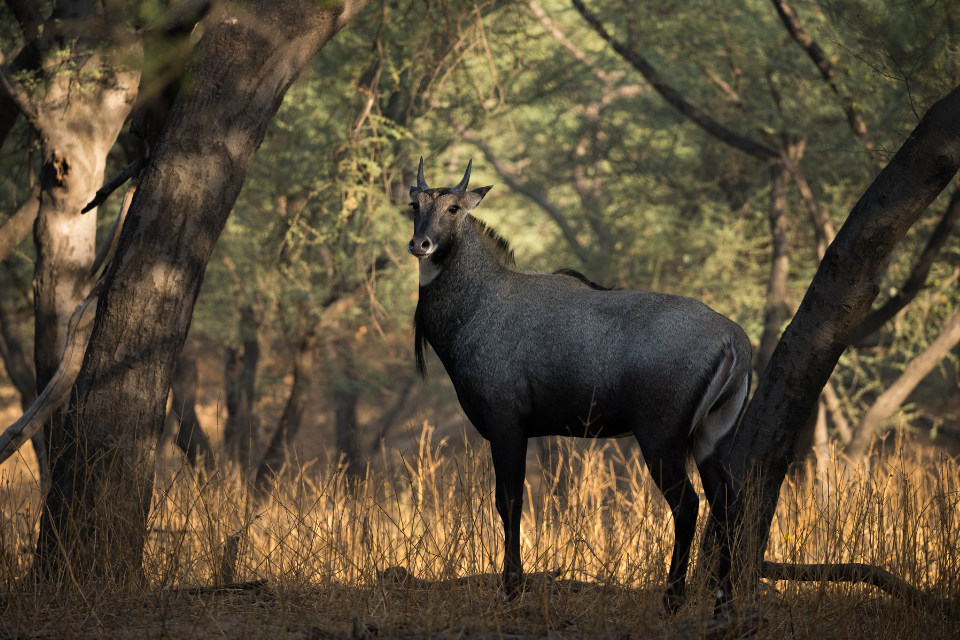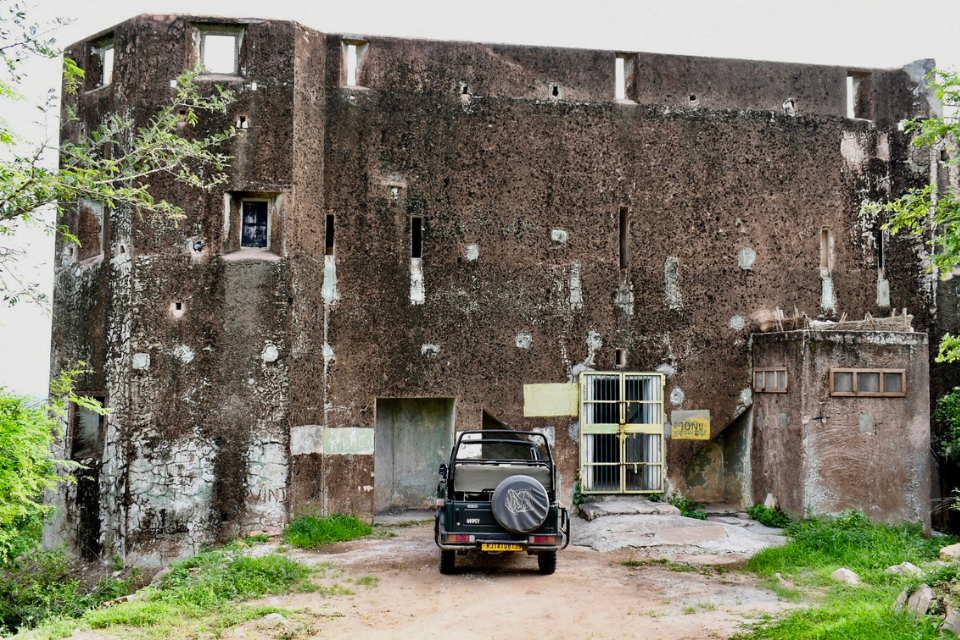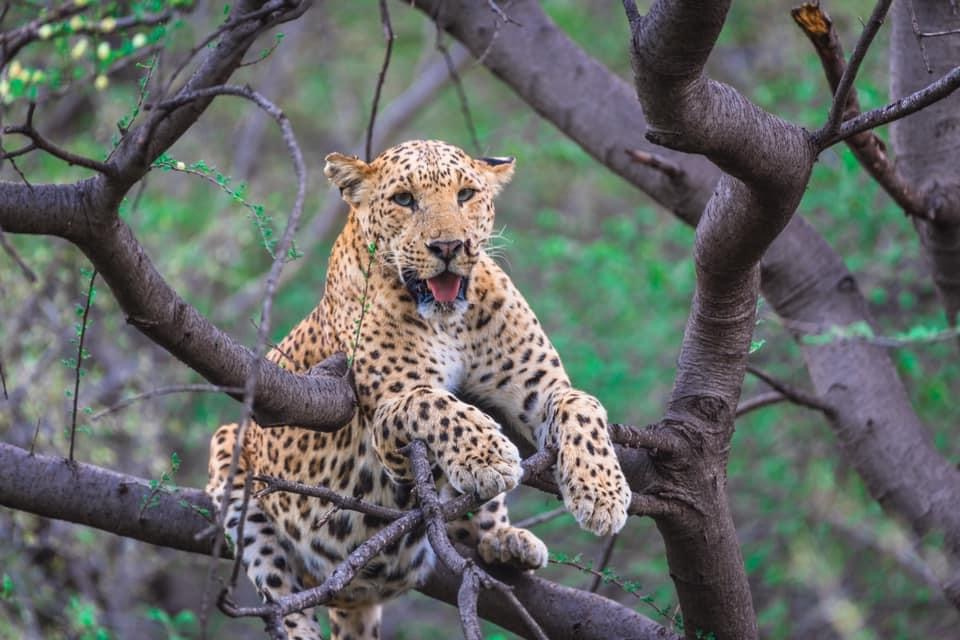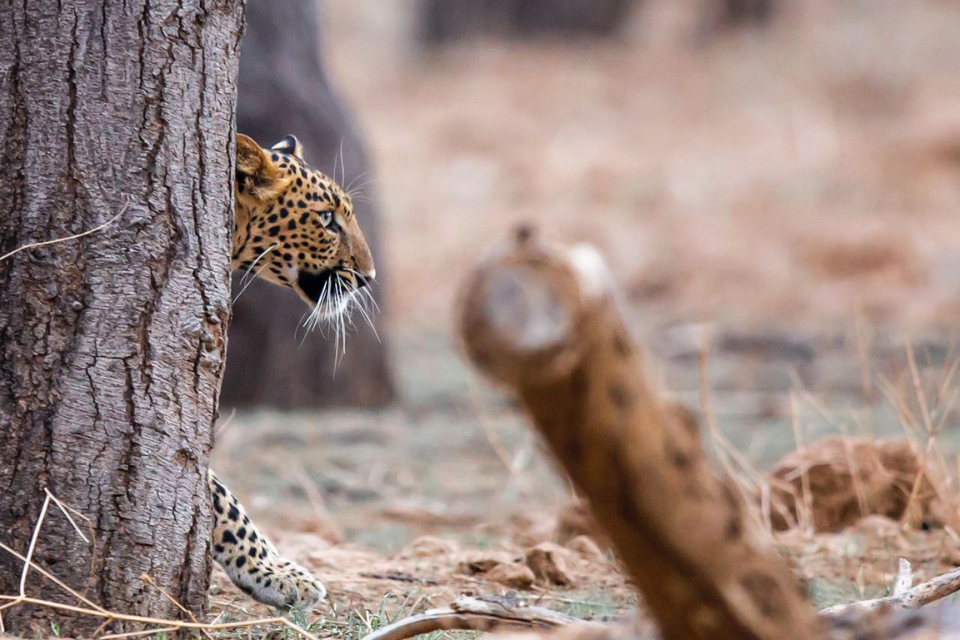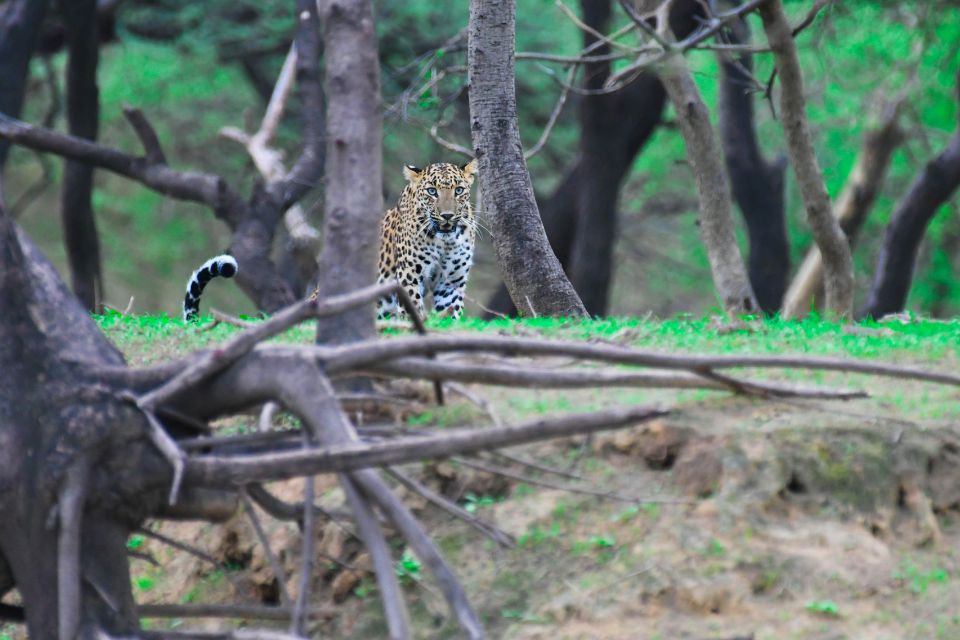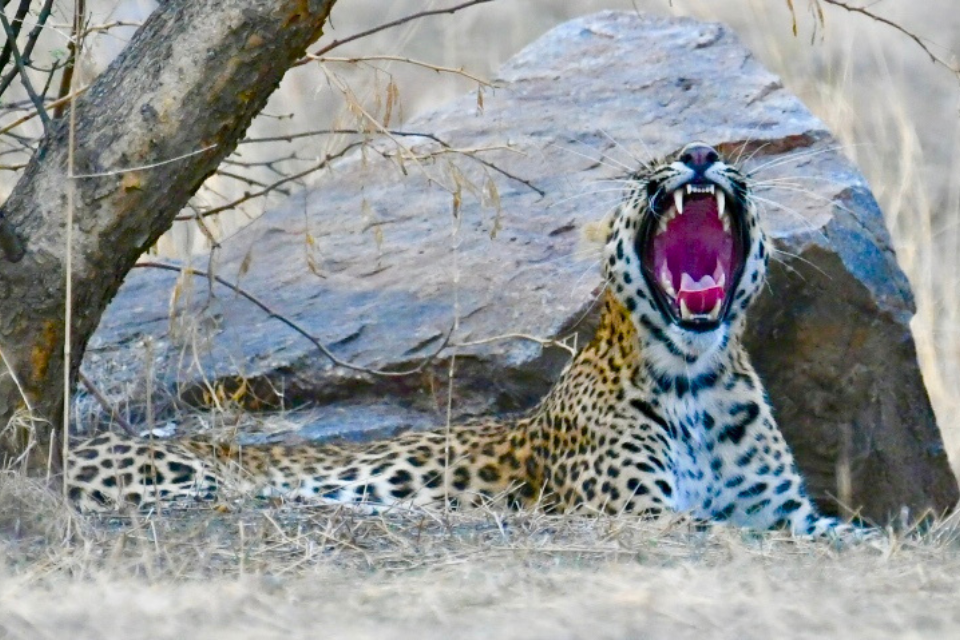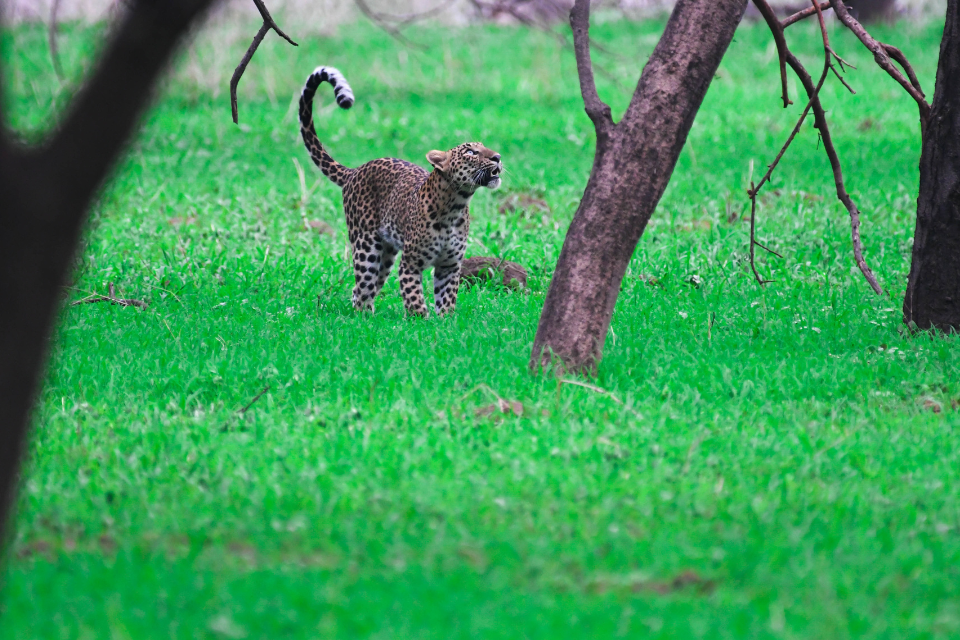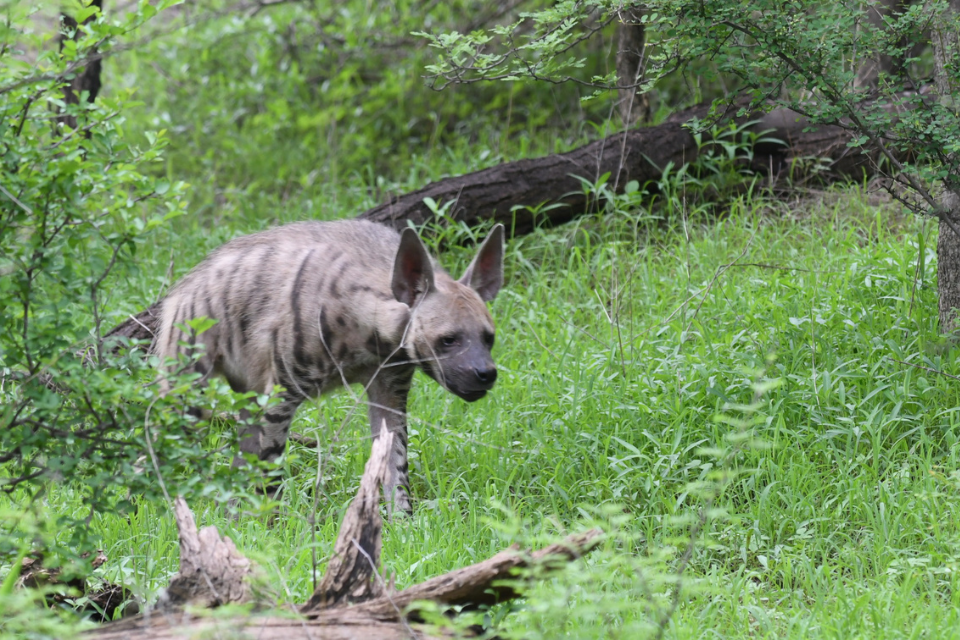- September 27, 2025
Maila Bagh Beed Papad vs Jhalana vs Amagarh in 2025–26: Which Jaipur Leopard Safari Should You Book?
Short answer: if you’re chasing freshest routes and fewer crowds, Maila Bagh/Beed Papad is the hot, new third zone. For the most established logistics and “safe bet” urban leopard viewing, Jhalana remains the classic. If you want rugged terrain, birding variety and seasonal drama in the Aravallis, Amagarh is a strong middle path. This guide compares them head-to-head—pros/cons, access, leopard density, track networks, approximate booking caps, timings, and best months—and ends with a decision flowchart and FAQs so you can book with confidence.
Note on freshness: Maila Bagh (often called Beed Papad Safari) was officially launched around World Environment Day, June 5, 2025, adding a third leopard-watching venue in Jaipur alongside Jhalana and Amagarh. Early coverage cited about 19 leopards, two primary routes (Kishan Bagh side and New Biological Park–Audhi Ramsagar linkage), roughly 15 km² of motorable tracks, and ~10 registered vehicles for guided tours, with access via Vidyadhar Nagar.
Snapshot: What’s New, What’s Proven
- Maila Bagh / Beed Papad (2025) – Jaipur’s newest leopard safari within the Maila Bagh–Beed Papad forest block of the Nahargarh Sanctuary. Expect new tracks, waterhole upgrades and relatively low crowding (for now). Access from Vidyadhar Nagar, with routes that touch Kishan Bagh and Audhi Ramsagar.
- Jhalana (2017) – India’s first dedicated leopard reserve and Jaipur’s original urban safari. Runs twice daily year-round, including monsoon, typically ~2.5–3 hours per drive. Immensely popular and frequently booked out in peak weeks.
- Amagarh (public safaris since ~2022) – A scenic Aravalli landscape east of the city, with two track types (major/minor) and seasonally shifting slots (morning/evening). Good blend of terrain, birdlife, and leopard prospects without Jhalana-level crowds.
Access & Logistics (How Easy Is It to Get In/Out?)
Maila Bagh / Beed Papad
- Gate/Approach: Vidyadhar Nagar side; convenient from northern and central Jaipur. Two main routes: Kishan Bagh and New Biological Park → Audhi Ramsagar.
- Vehicles: Coverage at launch referenced ~10 registered vehicles; early-phase fleets typically stay small to manage impact (confirm on the day).
Jhalana
- Gate/Approach: Intra-city; the closest leopard safari to most hotels.
- Vehicles & Demand: High demand; slots often sell out on weekends/holidays and even weeks ahead in season. If Jhalana is full, many operators suggest Amagarh as a plan B.
Amagarh
- Gate/Approach: East Jaipur; straightforward city access.
- Timings: Typical two slots daily, with published seasonal clocks; major/minor tracks rotate per forest rules and conditions.
Leopard Density & Sightings Logic
- Maila Bagh / Beed Papad: Early reporting puts the population around ~19 leopards in/around the developed routes—promising for sightings as animals pattern to new waterholes and tracks. Low novelty fatigue (new habitat for visitors) can translate into calmer sightings if etiquette is kept tight.
- Jhalana: A pioneer of urban-edge leopard watching where prey base, water sources and habituation support reliably good encounters; it’s popular for a reason. That said, success still swings with season, slot, and patience—no park can guarantee cats on cue.
- Amagarh: Similar urban-Aravalli dynamic with strong habitat complexity. Not as storied as Jhalana yet, but with solid prospects and (often) more breathing room at sightings. Published seasonal slot times help you sync with activity peaks.
Track Networks, Terrain & Drive Feel
- Maila Bagh / Beed Papad: Roughly 15 km² of motorable tracks developed/graded for the launch, plus restored grasslands and enhanced waterholes to support wildlife. Terrain mixes open scrub, rocky knolls, and wooded sections, creating photogenic sight lines.
- Jhalana: Classic undulating Aravalli scrub with old quarry edges, water points and jeep-friendly loops inside city limits—short transfers, familiar routes, and quick ops (great for half-day plans).
- Amagarh: Rugged Aravalli feel, with major and minor tracks; the mix of valleys, ridges and perches is excellent for scanning, with rewarding birding around monsoon and winter.
Timings, Duration & Best Months
Typical Slot Rhythm (Jaipur Leopard Safaris):
- Morning: ~2:30–3:00 hours, cooler air, animal movement to/from water.
- Evening: ~2:15–2:45 hours, magical dusk light; cats often get active.
Amagarh seasonal clock (illustrative published schedule):
- Time windows shift across the year (e.g., Nov–Jan mornings ~7:00–9:30, evenings ~3:15–5:45; August–October slightly earlier/later). Always check your ticket.
Best Months (all three):
Nov–Mar for comfort, Apr–May for peak visibility at water (hot, but cats concentrate), and Aug–Oct for lush monsoon backdrops (can be trickier for line-of-sight). Jaipur safaris typically operate year-round, including monsoon, but vegetation height and track conditions affect viewing.
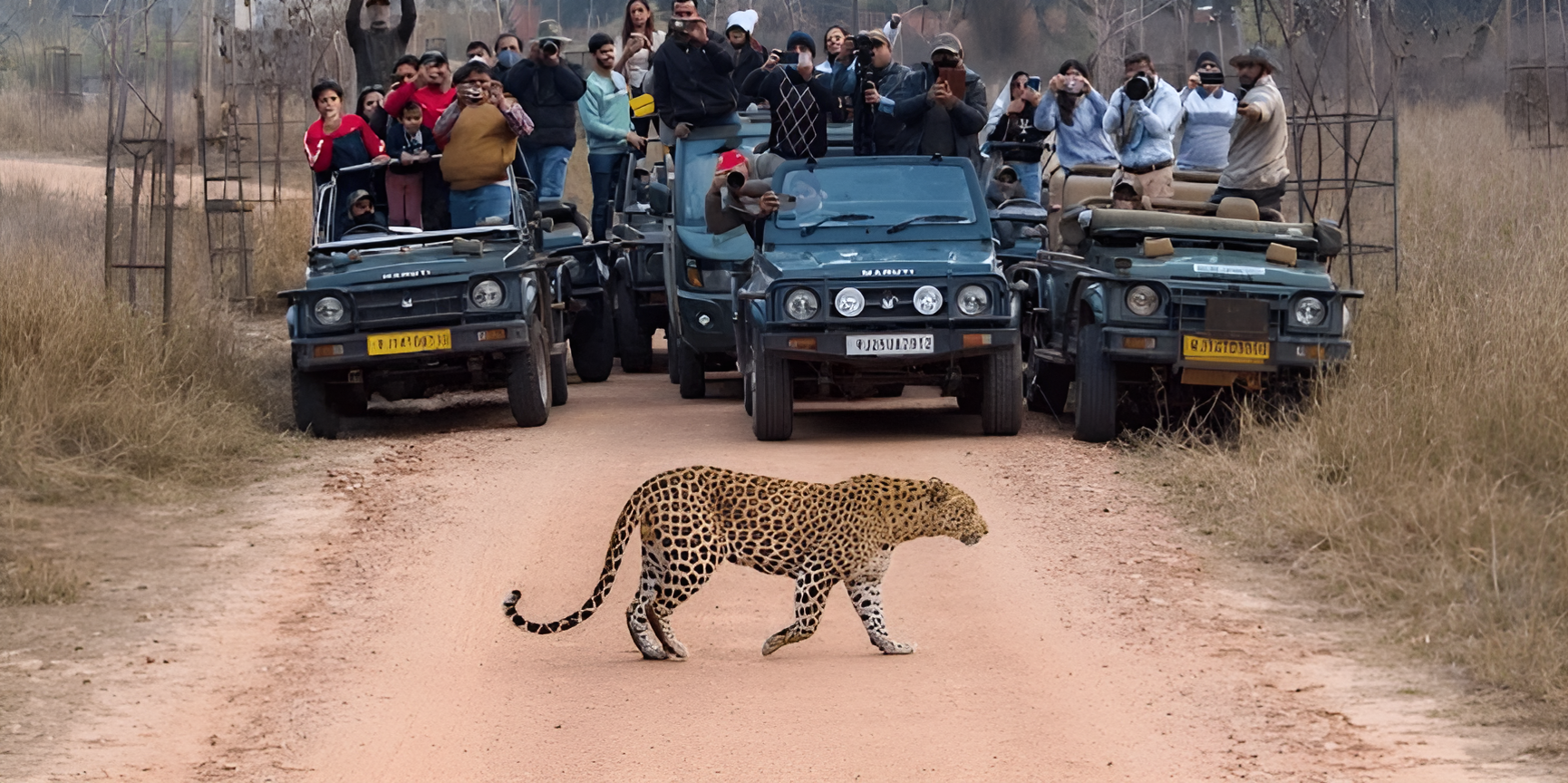
Booking Caps & Availability Reality
- Maila Bagh / Beed Papad: Launch reporting referenced ~10 registered vehicles on guided circuits, which naturally caps visitor flow and should keep encounters less crowded (for now). Expect policies to evolve with monitoring.
- Jhalana: Heavy demand, particularly weekends/holidays; book early or consider Amagarh/Maila Bagh when sold out. Some operators explicitly announce no availability for blocks of days during festivals/peaks.
- Amagarh: A balanced middle ground—good availability and structure without the heaviest pressure. Published two-slot schedule with major/minor track use.
Pros & Cons (At a Glance)
Maila Bagh / Beed Papad (New, 2025)
Pros
- Newest tracks & waterholes; fresh photographic perspectives.
- Lower crowding vs Jhalana (early phase).
- Two-route variety: Kishan Bagh and Biological Park–Audhi Ramsagar.
Cons - Policies and routes still evolving; expect minor procedural changes.
- Fewer published historic sightings than Jhalana (it’s new).
Best for: Early adopters, photographers wanting new angles, travelers staying near north/central Jaipur.
Jhalana (Original)
Pros
- Proven leopard hub with strong logistics and guides.
- City-close—minimal transfer times, easy to fit in itineraries.
- Year-round ops; many operators know micro-habitats well.
Cons - High demand/crowding around marquee sightings.
- Prime dates sell out fast.
Best for: First-timers who want a “classic” Jaipur leopard experience with polished operations.
Amagarh (Scenic, Structured)
Pros
- Rugged landscapes and birding; major/minor track diversity.
- Good availability vs Jhalana; structured seasonal timings.
Cons - Slightly longer transfers for some hotel clusters than Jhalana.
Sightings can be hit/miss if vegetation is high post-monsoon.
Best for: Travellers seeking a quieter, scenic drive with solid odds and less pressure than Jhalana.
Decision Flowchart (Text Version)
Start →
Q1: Is your top priority newest zone + fewer crowds?
→ Yes: Pick Maila Bagh / Beed Papad (fresh tracks, ~10-vehicle cap at launch).
→ No: Continue.
Q2: Do you want the most established, city-close setup with the largest knowledge base among guides?
→ Yes: Choose Jhalana (book early).
→ No: Continue.
Q3: Do you prefer scenic Aravalli terrain and balanced crowds with structured seasonal slots?
→ Yes: Amagarh is your pick.
→ No: Continue.
Q4: Are your target dates already sold out at Jhalana?
→ Yes: Try Amagarh first, then Maila Bagh.
→ No: Book Jhalana or split two drives across zones.
Pro tip: Photographers often pair zones (e.g., Maila Bagh evening for golden light + Jhalana morning for classic routes) to hedge conditions.
Practical Planner: Slots, Gear, Etiquette
- Morning vs Evening: Heat dictates movement; mornings are cooler, evenings offer drama at waterholes and dusk color.
- Lens & Binoculars: 300–600mm on full frame; 8×–10× binocs for scanning.
- Clothing: Earth tones; dust scarf; layer in winter.
- Etiquette: Low voices, engine off at sightings, no bait/playback, no flash, and follow guide instructions—this keeps cats calm and sightings longer.
- Monsoon Note: Rich greens = gorgeous frames; but vegetation height may reduce visibility; rely on alarm calls and track knowledge.
Suggested 1–2 Day Itineraries
One Day (Leopard Focus):
- AM Jhalana (city-close, classic loops) → midday rest → PM Maila Bagh (new routes, sunset silhouettes).
Two Days (Balanced):
- Day 1: AM Amagarh (terrain + birding) / PM Jhalana.
- Day 2: AM Maila Bagh (cooler scanning) / PM Maila Bagh again or Jhalana, depending on where activity trends.
FAQs (2025–26 Edition)
1) Is Maila Bagh the same as Beed Papad safari?
Yes—Maila Bagh safari encompasses the Maila Bagh–Beed Papad forest block, commonly marketed as Beed Papad (Beed Papad Leopard Safari). Access is typically via Vidyadhar Nagar.
2) When did Maila Bagh open?
Launch coverage placed the opening on June 5, 2025 (World Environment Day), with ~15 km² of motorable tracks and ~10 vehicles.
3) Which zone has the best leopard density?
All three are productive. Early Maila Bagh reports mention ~19 leopards; Jhalana and Amagarh also post strong results thanks to urban-edge prey and water. Sightings depend on season, slot, and luck.
4) Are there strict caps on vehicles?
Maila Bagh launched with ~10 registered vehicles; other zones run small fleets per slot. Caps and rotation can change—always check your ticket/operator.
5) Do safaris run during the monsoon?
Yes, Jaipur’s leopard safaris generally operate year-round, with seasonal timing shifts. Expect lush views but higher vegetation.
6) How long is each drive?
Roughly 2:15–3:00 hours depending on zone/season.
7) Morning or evening—what’s better?
Both can deliver. Mornings are comfortable and good for movement; evenings bring dusk behavior and color. In Apr–May, heat pushes animals to water late.
8) Is Jhalana too crowded now?
It’s popular and can book out weeks ahead in peak periods. If full, Amagarh or Maila Bagh are excellent alternatives.
9) Can families with kids go?
Yes—choose morning slots, brief the kids on quiet viewing, and sit them between adults for safety.
10) Ethical conduct?
Keep distance, no feeding, no calling/whistling, no flash, and respect guide/forest protocols. This preserves natural behavior and longer sightings for everyone.
Disclaimer All images used in this blog are either sourced from public domain or credited to their respective owners. If you are the copyright holder of any image and wish to request its removal or proper attribution, please contact us at [email protected]
